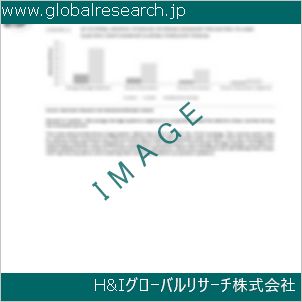1. Preface
1.1. Market Definition and Scope
1.2. Market Segmentation
1.3. Key Research Objectives
1.4. Research Highlights
2. Assumptions and Research Methodology
3. Executive Summary: Global Cell Therapy Technologies Market
4. Market Overview
4.1. Introduction
4.1.1. Market Definition
4.1.2. Industry Evolution / Developments
4.2. Overview
4.3. Market Dynamics
4.3.1. Drivers
4.3.2. Restraints
4.3.3. Opportunities
4.4. Global Cell Therapy Technologies Market Analysis and Forecast, 2017-2031
4.4.1. Market Revenue Projections (US$ Mn)
5. Key Insights
5.1. Technological Advancements
5.2. Overview of Cell Therapy Product Manufacturing Technologies
5.3. List of Instruments and Consumables Used For Each of the Technologies
5.4. Key Mergers & Acquisitions
5.5. Top 3 Players Operating in the Market Space
6. Global Cell Therapy Technologies Market Analysis and Forecast, by Cell Type
6.1. Introduction & Definition
6.2. Key Findings / Developments
6.3. Market Value Forecast, by Cell Type, 2017-2031
6.3.1. Allogeneic
6.3.1.1. Blood Cells
6.3.1.2. Others
6.3.2. Autologous
6.3.2.1. Human Embryonic Stem Cells
6.3.2.2. Hematopoietic Stem Cells
6.3.2.3. Mesenchymal Stem Cells
6.3.2.4. Others
6.4. Market Attractiveness Analysis, by Cell Type
7. Global Cell Therapy Technologies Market Analysis and Forecast, by Product
7.1. Introduction & Definition
7.2. Key Findings / Developments
7.3. Market Value Forecast, by Product, 2017-2031
7.3.1. Tissue Digestion
7.3.1.1. Instrumentation
7.3.1.2. Consumables & Reagents
7.3.2. Cell Selection/ Cell Isolation
7.3.2.1. Instrumentation
7.3.2.2. Consumables & Reagents
7.3.3. Cell Viability Testing
7.3.3.1. Instrumentation
7.3.3.2. Consumables & Reagents
7.3.4. Cell Transduction / Transfection
7.3.4.1. Instrumentation
7.3.4.2. Consumables & Reagents
7.3.5. Cell Expansion
7.3.5.1. Instrumentation
7.3.5.2. Consumables & Reagents
7.3.6. Quality Control Testing
7.3.6.1. Instrumentation
7.3.6.2. Consumables & Reagents
7.4. Market Attractiveness Analysis, by Product
8. Global Cell Therapy Technologies Market Analysis and Forecast, by Technology/Method
8.1. Introduction & Definition
8.2. Key Findings / Developments
8.3. Market Value Forecast, by Technology/Method, 2017-2031
8.3.1. Tissue Digestion
8.3.2. Cell Selection/Cell Isolation
8.3.2.1. Immunomagnetic Cell separation (IMS)
8.3.2.2. Fluorescence-activated Cell Sorting(FACS)
8.3.2.3. Density Gradient Centrifugation
8.3.2.4. Microfluidic Cell Separation (MCS)
8.3.2.5. Others
8.3.3. Cell Viability Testing
8.3.3.1. Tetrazolium Reduction Assay
8.3.3.2. Protease Viability Marker Assay
8.3.3.3. ATP Assay
8.3.3.4. Real-Time Assay
8.3.3.5. Others
8.3.4. Cell Transduction/Transfection
8.3.4.1. Cationic-lipid Mediated Transfection
8.3.4.2. Calcium Phosphate Transfection
8.3.4.3. Viral Transfection
8.3.4.4. Electroporation
8.3.4.5. Others
8.3.5. Cell Expansion
8.3.5.1. 3D Cell Culture
8.3.5.2. Roller Bottle Culture
8.3.5.3. Cell Culture Scale-up Systems
8.3.5.4. Spinner Flask Culture
8.3.5.5. Others
8.3.6. Quality Control Testing
8.3.6.1. Endotoxin
8.3.6.2. Mycoplasma
8.3.6.3. Others
8.4. Market Attractiveness Analysis, by Technology/Method
9. Global Cell Therapy Technologies Market Analysis and Forecast, by Application
9.1. Introduction & Definition
9.2. Key Findings / Developments
9.3. Market Value Forecast, by Application, 2017-2031
9.3.1. Cancer
9.3.2. Autoimmune Diseases
9.3.3. Cardiovascular Disorders
9.3.4. Orthopedic Disorders
9.3.5. Others
9.4. Market Attractiveness Analysis, by Application
10. Global Cell Therapy Technologies Market Analysis and Forecast, by Region
10.1. Key Findings
10.2. Market Value Forecast, by Region
10.2.1. North America
10.2.2. Europe
10.2.3. Asia Pacific
10.2.4. Latin America
10.2.5. Middle East & Africa
10.3. Market Attractiveness Analysis, by Region
11. North America Cell Therapy Technologies Market Analysis and Forecast
11.1. Introduction
11.1.1. Key Findings
11.2. Market Value Forecast, by Cell Type, 2017-2031
11.2.1. Allogeneic
11.2.1.1. Blood Cells
11.2.1.2. Others
11.2.2. Autologous
11.2.2.1. Human Embryonic Stem Cells
11.2.2.2. Hematopoietic Stem Cells
11.2.2.3. Mesenchymal Stem Cells
11.2.2.4. Others
11.3. Market Value Forecast, by Product, 2017-2031
11.3.1. Tissue Digestion
11.3.1.1. Instrumentation
11.3.1.2. Consumables & Reagents
11.3.2. Cell Selection/ Cell Isolation
11.3.2.1. Instrumentation
11.3.2.2. Consumables & Reagents
11.3.3. Cell Viability Testing
11.3.3.1. Instrumentation
11.3.3.2. Consumables & Reagents
11.3.4. Cell Transduction / Transfection
11.3.4.1. Instrumentation
11.3.4.2. Consumables & Reagents
11.3.5. Cell Expansion
11.3.5.1. Instrumentation
11.3.5.2. Consumables & Reagents
11.3.6. Quality Control Testing
11.3.6.1. Instrumentation
11.3.6.2. Consumables & Reagents
11.4. Market Value Forecast, by Technology/Method, 2017-2031
11.4.1. Tissue Digestion
11.4.2. Cell Selection/Cell Isolation
11.4.2.1. Immunomagnetic Cell separation (IMS)
11.4.2.2. Fluorescence-activated Cell Sorting(FACS)
11.4.2.3. Density Gradient Centrifugation
11.4.2.4. Microfluidic Cell Separation (MCS)
11.4.2.5. Others
11.4.3. Cell Viability Testing
11.4.3.1. Tetrazolium Reduction Assay
11.4.3.2. Protease Viability Marker Assay
11.4.3.3. ATP Assay
11.4.3.4. Real-Time Assay
11.4.3.5. Others
11.4.4. Cell Transduction/Transfection
11.4.4.1. Cationic-lipid Mediated Transfection
11.4.4.2. Calcium Phosphate Transfection
11.4.4.3. Viral Transfection
11.4.4.4. Electroporation
11.4.4.5. Others
11.4.5. Cell Expansion
11.4.5.1. 3D Cell Culture
11.4.5.2. Roller Bottle Culture
11.4.5.3. Cell Culture Scale-up Systems
11.4.5.4. Spinner Flask Culture
11.4.5.5. Others
11.4.6. Quality Control Testing
11.4.6.1. Endotoxin
11.4.6.2. Mycoplasma
11.4.6.3. Others
11.5. Market Value Forecast, by Application, 2017-2031
11.5.1. Cancer
11.5.2. Autoimmune Diseases
11.5.3. Cardiovascular Disorders
11.5.4. Orthopedic Disorders
11.5.5. Others
11.6. Market Value Forecast, by Country, 2017-2031
11.6.1. U.S.
11.6.2. Canada
11.7. Market Attractiveness Analysis
11.7.1. By Cell Type
11.7.2. By Product
11.7.3. By Technology/Method
11.7.4. By Application
11.7.5. By Country
12. Europe Cell Therapy Technologies Market Analysis and Forecast
12.1. Introduction
12.1.1. Key Findings
12.2. Market Value Forecast, by Cell Type, 2017-2031
12.2.1. Allogeneic
12.2.1.1. Blood Cells
12.2.1.2. Others
12.2.2. Autologous
12.2.2.1. Human Embryonic Stem Cells
12.2.2.2. Hematopoietic Stem Cells
12.2.2.3. Mesenchymal Stem Cells
12.2.2.4. Others
12.3. Market Value Forecast, by Product, 2017-2031
12.3.1. Tissue Digestion
12.3.1.1. Instrumentation
12.3.1.2. Consumables & Reagents
12.3.2. Cell Selection/ Cell Isolation
12.3.2.1. Instrumentation
12.3.2.2. Consumables & Reagents
12.3.3. Cell Viability Testing
12.3.3.1. Instrumentation
12.3.3.2. Consumables & Reagents
12.3.4. Cell Transduction / Transfection
12.3.4.1. Instrumentation
12.3.4.2. Consumables & Reagents
12.3.5. Cell Expansion
12.3.5.1. Instrumentation
12.3.5.2. Consumables & Reagents
12.3.6. Quality Control Testing
12.3.6.1. Instrumentation
12.3.6.2. Consumables & Reagents
12.4. Market Value Forecast, by Technology/Method, 2017-2031
12.4.1. Cell Selection/Cell Isolation
12.4.1.1. Immunomagnetic Cell separation (IMS)
12.4.1.2. Fluorescence-activated Cell Sorting(FACS)
12.4.1.3. Density Gradient Centrifugation
12.4.1.4. Microfluidic Cell Separation (MCS)
12.4.1.5. Others
12.4.2. Cell Viability Testing
12.4.2.1. Tetrazolium Reduction Assay
12.4.2.2. Protease Viability Marker Assay
12.4.2.3. ATP Assay
12.4.2.4. Real-Time Assay
12.4.2.5. Others
12.4.3. Cell Transduction/Transfection
12.4.3.1. Cationic-lipid Mediated Transfection
12.4.3.2. Calcium Phosphate Transfection
12.4.3.3. Viral Transfection
12.4.3.4. Electroporation
12.4.3.5. Others
12.4.4. Cell Expansion
12.4.4.1. 3D Cell Culture
12.4.4.2. Roller Bottle Culture
12.4.4.3. Cell Culture Scale-up Systems
12.4.4.4. Spinner Flask Culture
12.4.4.5. Others
12.4.5. Quality Control Testing
12.4.5.1. Endotoxin
12.4.5.2. Mycoplasma
12.4.5.3. Others
12.5. Market Value Forecast, by Application, 2017-2031
12.5.1. Cancer
12.5.2. Autoimmune Diseases
12.5.3. Cardiovascular Disorders
12.5.4. Orthopedic Disorders
12.5.5. Others
12.6. Market Value Forecast, by Country/Sub-region, 2017-2031
12.6.1. Germany
12.6.2. U.K.
12.6.3. France
12.6.4. Spain
12.6.5. Italy
12.6.6. Rest of Europe
12.7. Market Attractiveness Analysis
12.7.1. By Cell Type
12.7.2. By Product
12.7.3. By Technology/Method
12.7.4. By Application
12.7.5. By Country/Sub-region
13. Asia Pacific Cell Therapy Technologies Market Analysis and Forecast
13.1. Introduction
13.1.1. Key Findings
13.2. Market Value Forecast, by Cell Type, 2017-2031
13.2.1. Allogeneic
13.2.1.1. Blood Cells
13.2.1.2. Others
13.2.2. Autologous
13.2.2.1. Human Embryonic Stem Cells
13.2.2.2. Hematopoietic Stem Cells
13.2.2.3. Mesenchymal Stem Cells
13.2.2.4. Others
13.3. Market Value Forecast, by Product, 2017-2031
13.3.1. Tissue Digestion
13.3.1.1. Instrumentation
13.3.1.2. Consumables & Reagents
13.3.2. Cell Selection/ Cell Isolation
13.3.2.1. Instrumentation
13.3.2.2. Consumables & Reagents
13.3.3. Cell Viability Testing
13.3.3.1. Instrumentation
13.3.3.2. Consumables & Reagents
13.3.4. Cell Transduction / Transfection
13.3.4.1. Instrumentation
13.3.4.2. Consumables & Reagents
13.3.5. Cell Expansion
13.3.5.1. Instrumentation
13.3.5.2. Consumables & Reagents
13.3.6. Quality Control Testing
13.3.6.1. Instrumentation
13.3.6.2. Consumables & Reagents
13.4. Market Value Forecast, by Technology/Method, 2017-2031
13.4.1. Tissue Digestion
13.4.2. Cell Selection/Cell Isolation
13.4.2.1. Immunomagnetic Cell separation (IMS)
13.4.2.2. Fluorescence-activated Cell Sorting(FACS)
13.4.2.3. Density Gradient Centrifugation
13.4.2.4. Microfluidic Cell Separation (MCS)
13.4.2.5. Others
13.4.3. Cell Viability Testing
13.4.3.1. Tetrazolium Reduction Assay
13.4.3.2. Protease Viability Marker Assay
13.4.3.3. ATP Assay
13.4.3.4. Real-Time Assay
13.4.3.5. Others
13.4.4. Cell Transduction/Transfection
13.4.4.1. Cationic-lipid Mediated Transfection
13.4.4.2. Calcium Phosphate Transfection
13.4.4.3. Viral Transfection
13.4.4.4. Electroporation
13.4.4.5. Others
13.4.5. Cell Expansion
13.4.5.1. 3D Cell Culture
13.4.5.2. Roller Bottle Culture
13.4.5.3. Cell Culture Scale-up Systems
13.4.5.4. Spinner Flask Culture
13.4.5.5. Others
13.4.6. Quality Control Testing
13.4.6.1. Endotoxin
13.4.6.2. Mycoplasma
13.4.6.3. Others
13.5. Market Value Forecast, by Application, 2017-2031
13.5.1. Cancer
13.5.2. Autoimmune Diseases
13.5.3. Cardiovascular Disorders
13.5.4. Orthopedic Disorders
13.5.5. Others
13.6. Market Value Forecast, by Country/Sub-region, 2017-2031
13.6.1. China
13.6.2. Japan
13.6.3. India
13.6.4. Australia & New Zealand
13.6.5. Rest of Asia Pacific
13.7. Market Attractiveness Analysis
13.7.1. By Cell Type
13.7.2. By Product
13.7.3. By Technology/Method
13.7.4. By Application
13.7.5. By Country/Sub-region
14. Latin America Cell Therapy Technologies Market Analysis and Forecast
14.1. Introduction
14.1.1. Key Findings
14.2. Market Value Forecast, by Cell Type, 2017-2031
14.2.1. Allogeneic
14.2.1.1. Blood Cells
14.2.1.2. Others
14.2.2. Autologous
14.2.2.1. Human Embryonic Stem Cells
14.2.2.2. Hematopoietic Stem Cells
14.2.2.3. Mesenchymal Stem Cells
14.2.2.4. Others
14.3. Market Value Forecast, by Product, 2017-2031
14.3.1. Tissue Digestion
14.3.1.1. Instrumentation
14.3.1.2. Consumables & Reagents
14.3.2. Cell Selection/ Cell Isolation
14.3.2.1. Instrumentation
14.3.2.2. Consumables & Reagents
14.3.3. Cell Viability Testing
14.3.3.1. Instrumentation
14.3.3.2. Consumables & Reagents
14.3.4. Cell Transduction / Transfection
14.3.4.1. Instrumentation
14.3.4.2. Consumables & Reagents
14.3.5. Cell Expansion
14.3.5.1. Instrumentation
14.3.5.2. Consumables & Reagents
14.3.6. Quality Control Testing
14.3.6.1. Instrumentation
14.3.6.2. Consumables & Reagents
14.4. Market Value Forecast, by Technology/Method, 2017-2031
14.4.1. Tissue Digestion
14.4.2. Cell Selection/Cell Isolation
14.4.2.1. Immunomagnetic Cell separation (IMS)
14.4.2.2. Fluorescence-activated Cell Sorting(FACS)
14.4.2.3. Density Gradient Centrifugation
14.4.2.4. Microfluidic Cell Separation (MCS)
14.4.2.5. Others
14.4.3. Cell Viability Testing
14.4.3.1. Tetrazolium Reduction Assay
14.4.3.2. Protease Viability Marker Assay
14.4.3.3. ATP Assay
14.4.3.4. Real-Time Assay
14.4.3.5. Others
14.4.4. Cell Transduction/Transfection
14.4.4.1. Cationic-lipid Mediated Transfection
14.4.4.2. Calcium Phosphate Transfection
14.4.4.3. Viral Transfection
14.4.4.4. Electroporation
14.4.4.5. Others
14.4.5. Cell Expansion
14.4.5.1. 3D Cell Culture
14.4.5.2. Roller Bottle Culture
14.4.5.3. Cell Culture Scale-up Systems
14.4.5.4. Spinner Flask Culture
14.4.5.5. Others
14.4.6. Quality Control Testing
14.4.6.1. Endotoxin
14.4.6.2. Mycoplasma
14.4.6.3. Others
14.5. Market Value Forecast, by Application, 2017-2031
14.5.1. Cancer
14.5.2. Autoimmune Diseases
14.5.3. Cardiovascular Disorders
14.5.4. Orthopedic Disorders
14.5.5. Others
14.6. Market Value Forecast, by Country/Sub-region, 2017-2031
14.6.1. Brazil
14.6.2. Mexico
14.6.3. Rest of Latin America
14.7. Market Attractiveness Analysis
14.7.1. By Cell Type
14.7.2. By Product
14.7.3. By Technology/Method
14.7.4. By Application
14.7.5. By Country/Sub-region
15. Middle East & Africa Cell Therapy Technologies Market Analysis and Forecast
15.1. Introduction
15.1.1. Key Findings
15.2. Market Value Forecast, by Cell Type, 2017-2031
15.2.1. Allogeneic
15.2.1.1. Blood Cells
15.2.1.2. Others
15.2.2. Autologous
15.2.2.1. Human Embryonic Stem Cells
15.2.2.2. Hematopoietic Stem Cells
15.2.2.3. Mesenchymal Stem Cells
15.2.2.4. Others
15.3. Market Value Forecast, by Product, 2017-2031
15.3.1. Tissue Digestion
15.3.1.1. Instrumentation
15.3.1.2. Consumables & Reagents
15.3.2. Cell Selection/ Cell Isolation
15.3.2.1. Instrumentation
15.3.2.2. Consumables & Reagents
15.3.3. Cell Viability Testing
15.3.3.1. Instrumentation
15.3.3.2. Consumables & Reagents
15.3.4. Cell Transduction / Transfection
15.3.4.1. Instrumentation
15.3.4.2. Consumables & Reagents
15.3.5. Cell Expansion
15.3.5.1. Instrumentation
15.3.5.2. Consumables & Reagents
15.3.6. Quality Control Testing
15.3.6.1. Instrumentation
15.3.6.2. Consumables & Reagents
15.4. Market Value Forecast, by Technology/Method, 2017-2031
15.4.1. Tissue Digestion
15.4.2. Cell Selection/Cell Isolation
15.4.2.1. Immunomagnetic Cell separation (IMS)
15.4.2.2. Fluorescence-activated Cell Sorting(FACS)
15.4.2.3. Density Gradient Centrifugation
15.4.2.4. Microfluidic Cell Separation (MCS)
15.4.2.5. Others
15.4.3. Cell Viability Testing
15.4.3.1. Tetrazolium Reduction Assay
15.4.3.2. Protease Viability Marker Assay
15.4.3.3. ATP Assay
15.4.3.4. Real-Time Assay
15.4.3.5. Others
15.4.4. Cell Transduction/Transfection
15.4.4.1. Cationic-lipid Mediated Transfection
15.4.4.2. Calcium Phosphate Transfection
15.4.4.3. Viral Transfection
15.4.4.4. Electroporation
15.4.4.5. Others
15.4.5. Cell Expansion
15.4.5.1. 3D Cell Culture
15.4.5.2. Roller Bottle Culture
15.4.5.3. Cell Culture Scale-up Systems
15.4.5.4. Spinner Flask Culture
15.4.5.5. Others
15.4.6. Quality Control Testing
15.4.6.1. Endotoxin
15.4.6.2. Mycoplasma
15.4.6.3. Others
15.5. Market Value Forecast, by Application, 2017-2031
15.5.1. Cancer
15.5.2. Autoimmune Diseases
15.5.3. Cardiovascular Disorders
15.5.4. Orthopedic Disorders
15.5.5. Others
15.6. Market Value Forecast, by Country/Sub-region, 2017-2031
15.6.1. GCC Countries
15.6.2. South Africa
15.6.3. Rest of Middle East & Africa
15.7. Market Attractiveness Analysis
15.7.1. By Cell Type
15.7.2. By Product
15.7.3. By Technology/Method
15.7.4. By Application
15.7.5. By Country/Sub-region
16. Competition Landscape
16.1. Market Share Analysis, by Company, 2022
16.2. Company Profiles
16.2.1. Agilent Technologies
16.2.1.1. Company Overview
16.2.1.2. Financial Overview
16.2.1.3. Product Portfolio
16.2.1.4. Business Strategies
16.2.1.5. Recent Developments
16.2.2. Merck KGaA
16.2.2.1. Company Overview
16.2.2.2. Financial Overview
16.2.2.3. Product Portfolio
16.2.2.4. Business Strategies
16.2.2.5. Recent Developments
16.2.3. Thermo Fisher Scientific, Inc.
16.2.3.1. Company Overview
16.2.3.2. Financial Overview
16.2.3.3. Product Portfolio
16.2.3.4. Business Strategies
16.2.3.5. Recent Developments
16.2.4. Miltenyi Biotech
16.2.4.1. Company Overview
16.2.4.2. Financial Overview
16.2.4.3. Product Portfolio
16.2.4.4. Business Strategies
16.2.4.5. Recent Developments
16.2.5. GE Healthcare (General Electric Company)
16.2.5.1. Company Overview
16.2.5.2. Financial Overview
16.2.5.3. Product Portfolio
16.2.5.4. Business Strategies
16.2.5.5. Recent Developments
16.2.6. Beckman Coulter, Inc. (Danaher)
16.2.6.1. Company Overview
16.2.6.2. Financial Overview
16.2.6.3. Product Portfolio
16.2.6.4. Business Strategies
16.2.6.5. Recent Developments
16.2.7. Sartorius AG
16.2.7.1. Company Overview
16.2.7.2. Financial Overview
16.2.7.3. Product Portfolio
16.2.7.4. Business Strategies
16.2.7.5. Recent Developments
16.2.8. Lonza Group
16.2.8.1. Company Overview
16.2.8.2. Financial Overview
16.2.8.3. Product Portfolio
16.2.8.4. Business Strategies
16.2.8.5. Recent Developments
16.2.9. Terumo Corporation
16.2.9.1. Company Overview
16.2.9.2. Financial Overview
16.2.9.3. Product Portfolio
16.2.9.4. Business Strategies
16.2.9.5. Recent Developments
16.2.10. Curate Biosciences
16.2.10.1. Company Overview
16.2.10.2. Financial Overview
16.2.10.3. Product Portfolio
16.2.10.4. Business Strategies
16.2.10.5. Recent Developments
❖ 免責事項 ❖
http://www.globalresearch.jp/disclaimer












